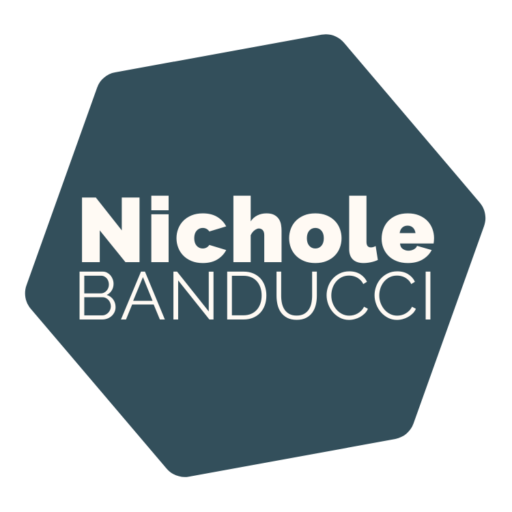Have you ever tried eating foods to make your skin look better? Essentially, eating food for healthy skin. If you haven’t tried it, I highly recommend that you focus on eating skin-friendly foods for a week and see what happens. Game?… then this blog post is for you!
There was a year where once a month I’d eat salmon for an entire week. Every. Single. Day. My goal was to get the healthy skin benefits of the essential fatty acids and nutrients found in salmon. It really seemed to work… my skin looked better and honestly, I felt like I’d had spa food for a week! Yet, eating salmon every day can get expensive and honestly, a bit boring.
Recently, I turned 49-years-old (gasp). I’ve been on the path to menopause for several years now, causing me to see dramatic changes in the appearance of my skin. Sure, I could try a bunch of new skin creams and treatments. But darn, those get sooooo crazy expensive.
Looking More than Skin Deep
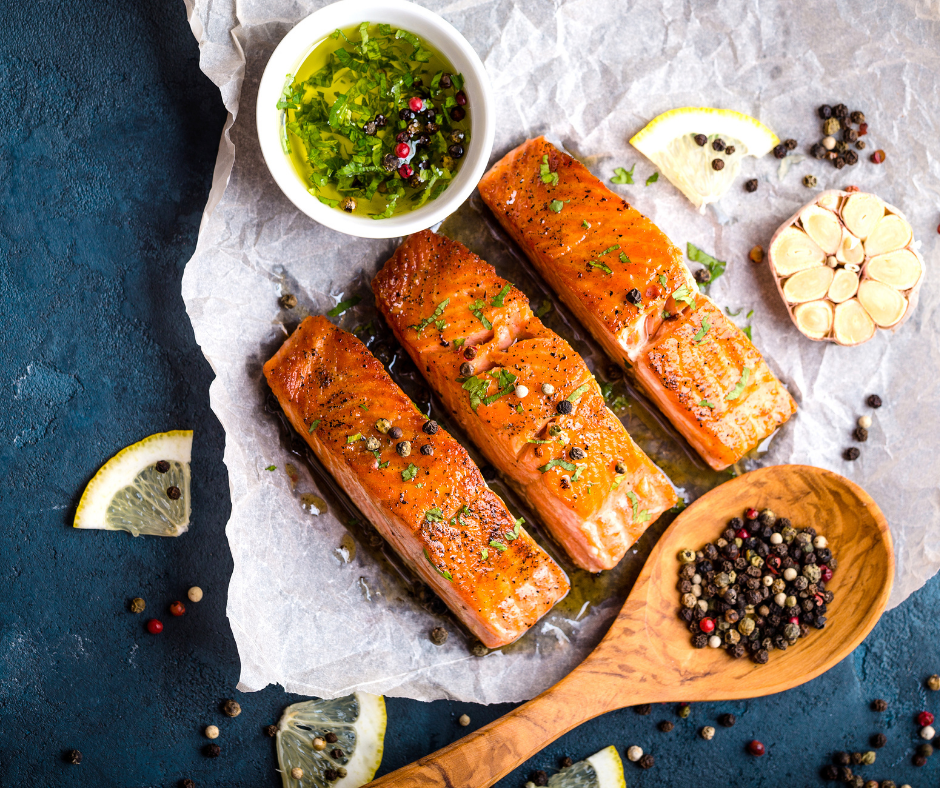
We all know that food can make a huge impact on your health. How about eating things that specifically help your skin to look better? Heck, you gotta eat anyway, am-I-right? Plus, what’s the worst thing that can happen… you get used to eating a bunch of super healthy ingredients? Darn, what a bummer. (ha ha)
So, I dove-in and spent WAY more time than I probably should have to research a list of food for healthy skin. There were a ton of articles that happily gave me a list. Yet, I wanted to learn more about why these foods were good for my skin, so I chewed through a bunch of scientific papers and articles. As I streamlined all the data, I saw three main categories of nutrients to help your skin health:
- Photo-Protective: targeting the effects of UV/sun exposure
- Hydration: keeping your skin lush
- Oxidation & Inflammation: fighting skin-wrecking invaders
This post will give you the 411 on how your skin can benefit from these categories of foods. I give you the ‘why’ behind each. Yet, if you just want the actual lists of foods… look for “Here’s the List:” within each section and you’re set.
But First… What Skin-Wrecking Foods Should You Avoid?
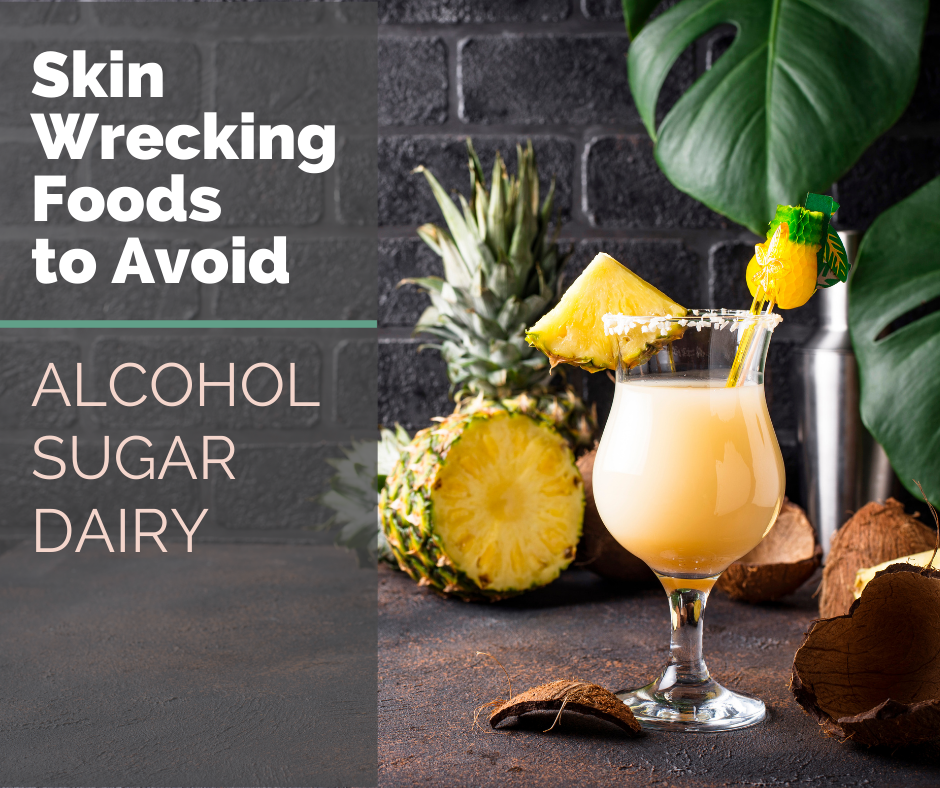
The terrible three for your skin are alcohol, sugar, and dairy. (Sorry to pop your party food bubble.) In general, you should limit the consumption of these foods for overall health. An extra incentive for limiting them is the harm they can cause your skin. Here’s a quick summary of why:
Alcohol
Vogue Magazine has a great article about how alcohol wrecks your skin. Not surprisingly, they list dehydration and inflammation as the key alcohol-related predators to your skin’s health. The article includes a quote by New York nutritionist Jairo Rodriguez, who said “Alcohol is actually one of the worst, most aggressive compounds to destroy your skin.”
Sugar
Much like alcohol, sugar causes inflammation within your body… a no-no for skin health because it breaks down collagen and elastin. In addition, when sugar is digested, it starts a process called glycation, which can increase acne and rosacea.
Dairy
It is believed that the added and natural hormones in dairy can trigger an increase in acne and breakouts. Lactose sensitivity is also a potential factor for dairy-related skin reactions.
Categories of Food for Healthy Skin
Let’s get to the juicy details on food for healthy skin. (Literally juicy, as so many are fruits and vegetables.) As I mentioned before, there are three different benefits that an ingredient/food/drink can provide to your skin. Not surprising, Salmon and other types of oily fish land on each list! (If you love salmon, you’ve gotta try my favorite salmon pasta recipe.)
Photo-Protective
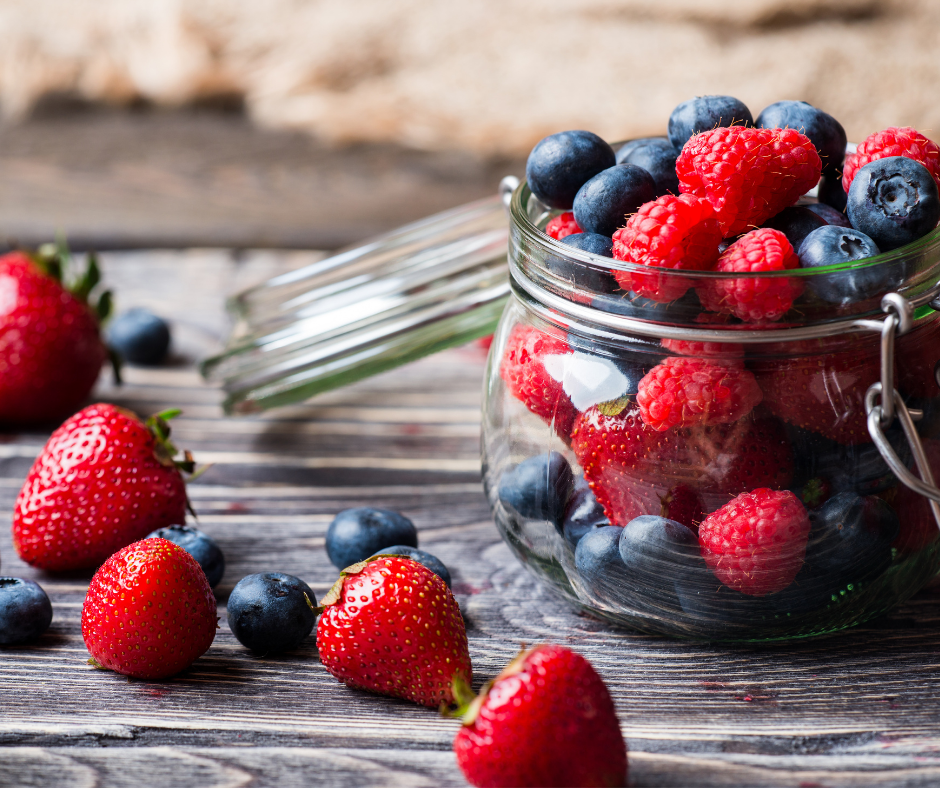
Did you know that 80% of facial aging is due to UV-exposure? (ncbi) That’s crazy-town, right?
Well, there are foods that provide you photo-protective nutrients to help to prevent facial aging due to UV-exposure. Beta carotene, astaxanthin (blue/purple/red pigment), vitamin C, lycopene and green tea polyphenols can all be thanked for providing your that valuable protection.
Here’s the List:
The top foods that fall within this category are carrots, pumpkin, sweet potatoes, mango, microalgae, yeast, salmon, crustacea, tomatoes, papaya, watermelon, guava, blackcurrant, citrus fruits, rosehip, berries, parsley, and green tea.
Hydration
This category is one that I think of most when I contemplate food for healthy skin… gorgeous, hydrated skin! There are two main categories of foods that you can bank on to help boost your luscious glow: essential fatty acids (EFAs) and hyaluronic acid (HA) producers.
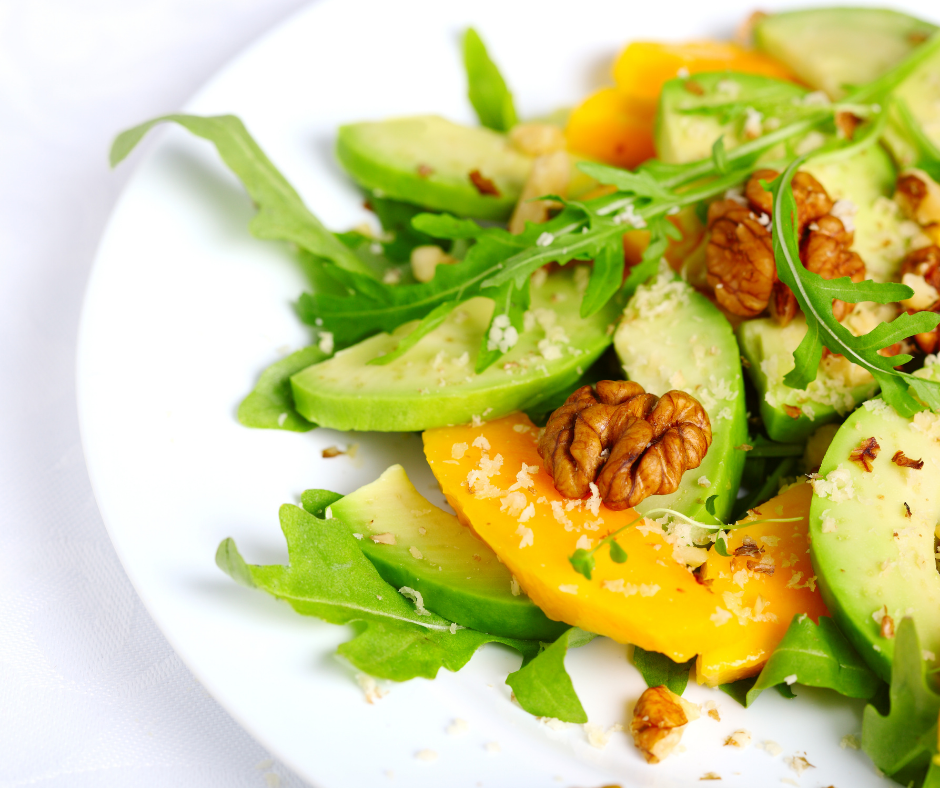
Essential Fatty Acids (EFAs)
You’ve most likely heard of EFAs, as they are traditionally a big part of ‘healthy eating’ media. These fatty acids are a fantastic resource for your hair, skin, cell membranes, brain function, hormone production, and circulatory system. Importantly, your body cannot produce EFAs on its own, so it is critical that you consume them daily to help support your system.
Here’s the List:
To get your EFAs, focus on oily fish (like salmon and tuna), shellfish, avocado, seeds (chia, pumpkin, sunflower, sesame), plant oils (hemp, soy, canola), leafy greens, and walnuts.
Hyaluronic Acid (HA)
So now, let’s take a look at hyaluronic acid (HA). You may have seen this in the beauty aisle because it has become a popular ingredient in facial creams and serums. Rightly so, as HA is naturally occurring in our skin and helps maintain hydration.
The cool thing about HA is that your body can use it directly, plus it can also create HA with nutrients like magnesium, zinc, and vitamin C. Pure HA can be put directly on your skin for absorption, but it is even more efficient to consume HA and the three main HA-creation components listed above.
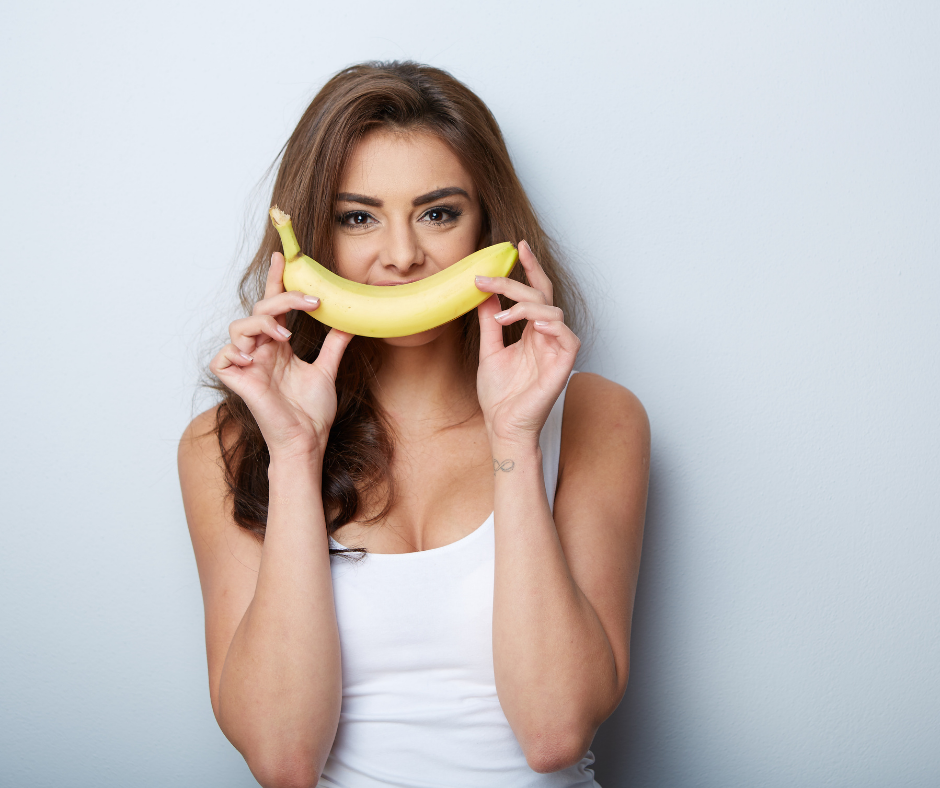
Here’s the List:
Some foods have HA present in them already: bone broth, organ meats, root vegetables, and bananas. Others have great levels of the supportive nutrients your body needs to make HA. Leafy greens, almonds, cashews, soy, oranges, tomatoes, avocados, cherries, grapes, mango, red peppers, dark chocolate, beans, and red wine all contain enough magnesium, zinc, or vitamin C to help your body create the HA.
BTW – bananas are truly the HA star in that they contain HA, and the three key nutrients needed to create HA in your body (again: magnesium, zinc, and vitamin C).
Oxidation & Inflammation
If you were to try to control one major health-hindering cycle in your whole body, it would be the interplay between cellular oxidation and inflammation. Excess oxidative stress can start a cascade of pro-inflammatory reactions. In turn, inflammation can trigger oxidation. Both oxidation and inflammation wreak havoc on your skin (and are the cause of most diseases we face).
Oxidation
Our skin cells turn over a ton, with its constant renewal causing ongoing oxidation within your skin. According to a phenomenal article on Nature.com, this high level of oxidation is the underlying cause of skin aging. A natural process within our bodies that happens regardless of our overall wellness.
Yet, by increasing our consumption of antioxidants, we can help to arm our cells with the weapons they need to fight oxidative damage. Because this damage is happening every day, you need to support your defenses with the right foods constantly.
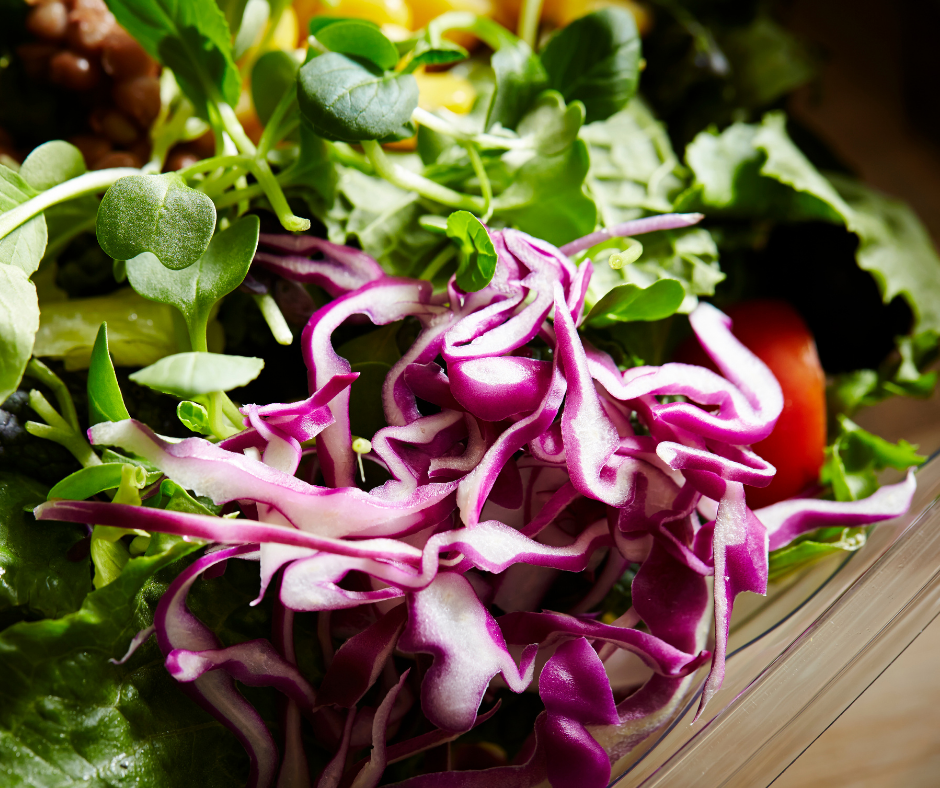
Here’s the List:
Foods known to have high levels of antioxidants include citrus fruits, berries, parsley, rosehips, guava, red cabbage, grapes, black plums, and red radish.
In addition, Coenzyme Q10 (CoQ10) is a significant lipid antioxidant in your system. There are long lists of foods like oily fish, organ meats, and whole grains that contain CoQ10. Yet, the amount of CoQ10 in these foods falls short of what you need. (There is even a question if supplements can be made available to your skin.)
One article explains how researchers have seen an increase in CoQ10 production in your body via the consumption of chlorophyll and exposure to the sun. So, feel free to make a big salad with greens and antioxidants and go relax outside.
Inflammation
You’re almost always going to have some form of inflammation within your body. It is a key immune system defense mechanism that helps trigger your valuable healing process to threats.
Inflammation shows up on your skin in the form of occasional rashes accompanied by skin itching and redness, to chronic conditions such as dermatitis (eczema), rosacea, seborrheic dermatitis, and psoriasis.
However, because even minor inflammation can cause oxidation, you don’t want to wait to see the topical symptoms mentioned above. Instead, it’s best to proactively add anti-inflammatory foods into your diet.
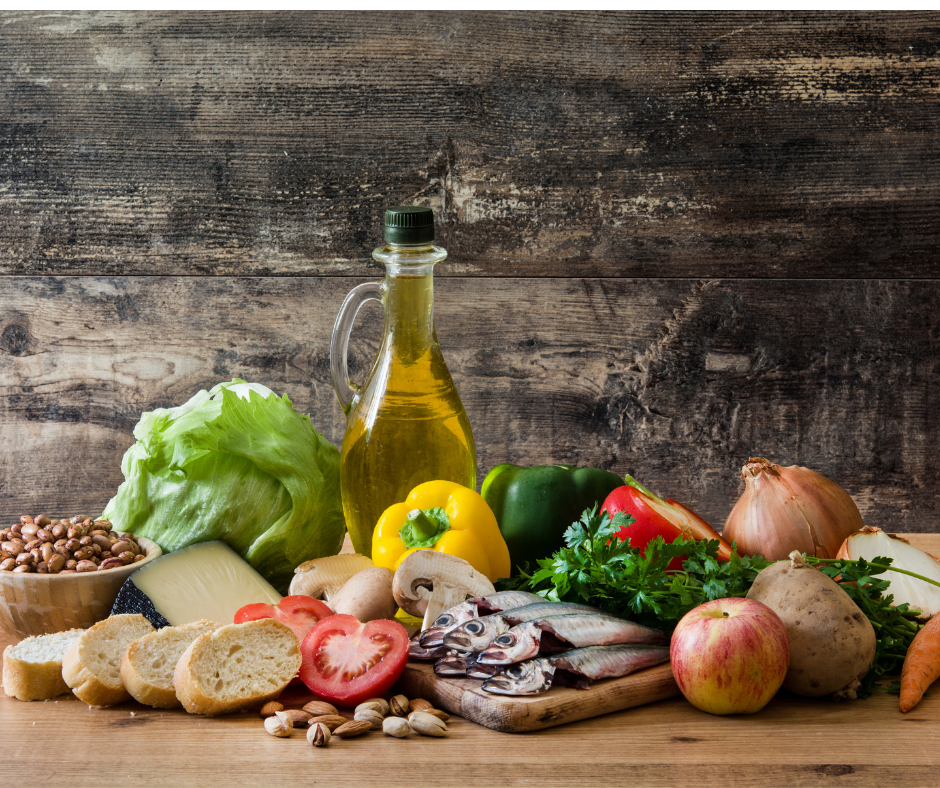
Here’s the List:
A Mediterranean diet does a great job of checking-the-box for anti-inflammatory foods. It includes fruits, vegetables, fish, olive oil, nuts, seeds, and whole grains. Adding in turmeric, ginger, rosemary, garlic, blueberries, grapes, and celery increases the anti-inflammatory punch.
One more way to stop inflammation before it has a chance to flare-up… in your gut. Good bacteria can control immune cells and help to calm your system at the source. Probiotic foods like yogurt, kombucha, and cheddar cheese are fantastic paired with prebiotics like bananas, onions, asparagus, and garlic. (Probiotics are the bugs, pre-biotics are what the bugs like to eat.)
Yes, I know that’s a lot. Just remember that there are three main categories of food for healthy skin. Each giving you some great benefits:
- Photo-Protective: Orange, Blue, Purple & Red Fruits & Veggies (targeting the effects of UV/sun exposure)
- Hydration: EFAs & HA (keeping your skin lush)
- Oxidation & Inflammation: Anti-oxidants & Mediterranean Diet (fighting skin-wrecking invaders)
Take another look at each list… which skin health-boosting foods do you want to add to your meals right away? Let me know in the comments! Plus, if you’d like recipes for specific foods, drop me a note and I’ll get on it.
Cheers!
Contents
